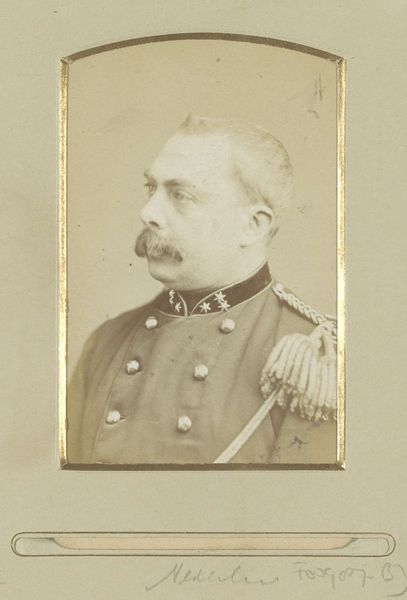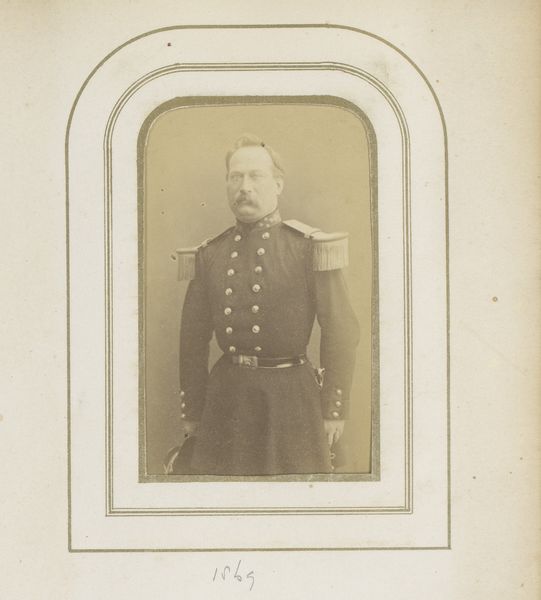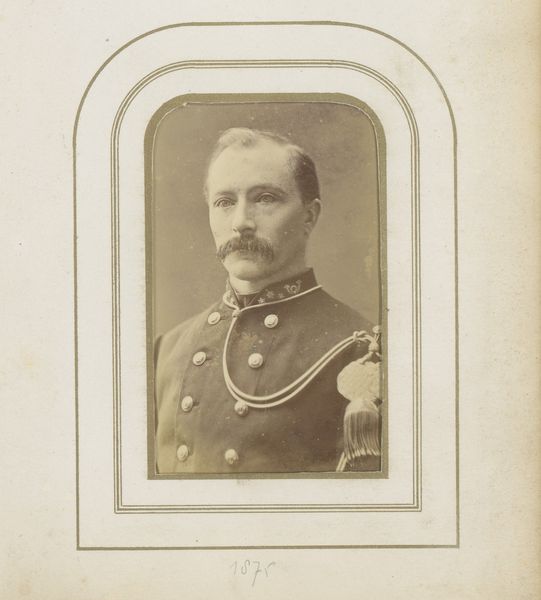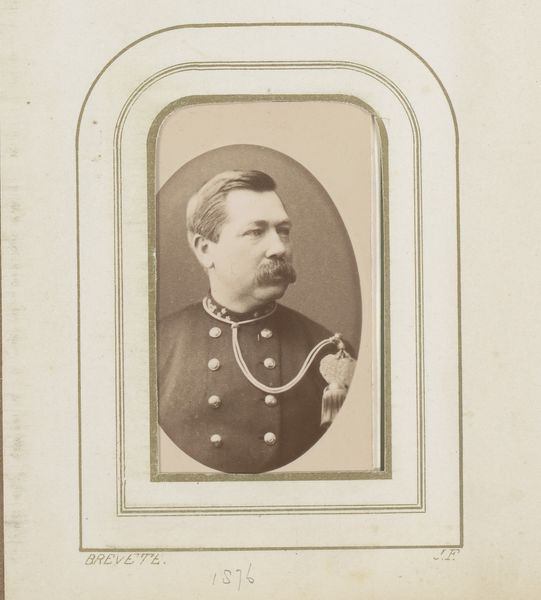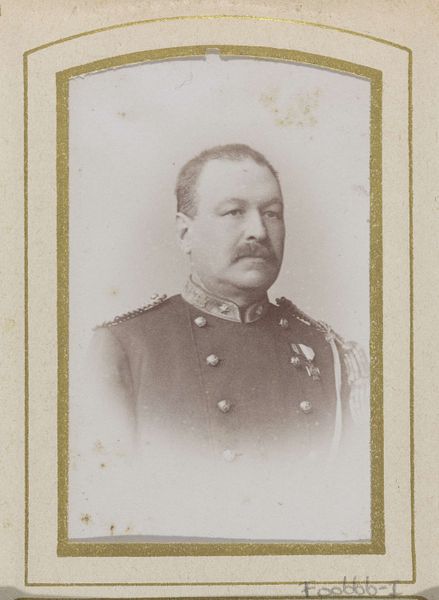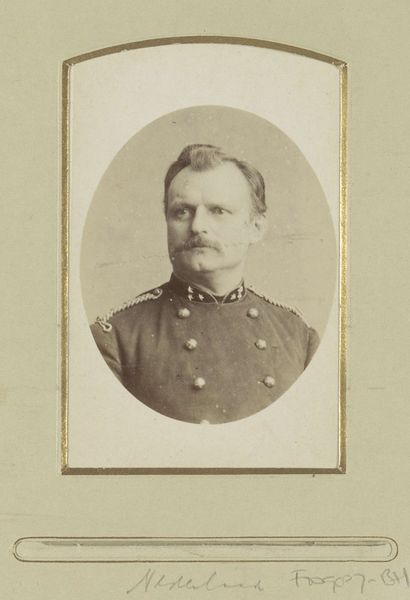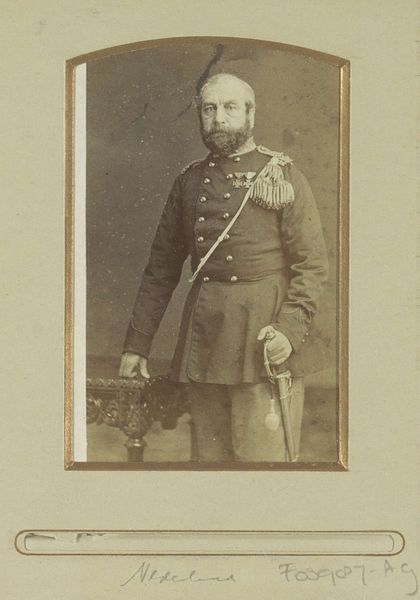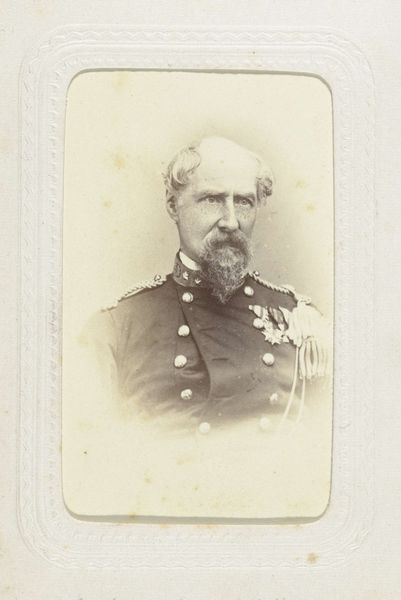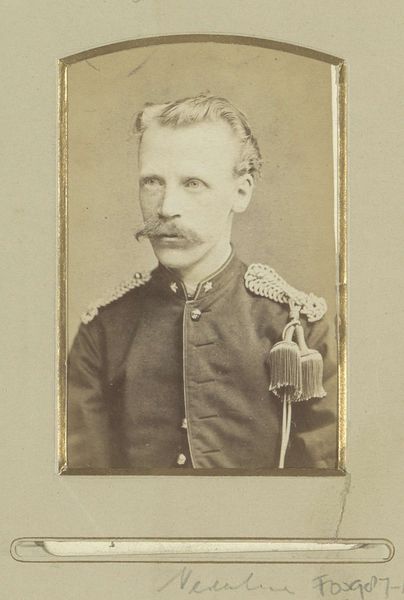
print, photography, gelatin-silver-print
#
portrait
# print
#
photography
#
gelatin-silver-print
#
realism
Dimensions: height 103 mm, width 63 mm
Copyright: Rijks Museum: Open Domain
Curator: This is an interesting gelatin-silver print entitled “Portret van een (vermoedelijk) Nederlandse militair”, or "Portrait of a (Presumed) Dutch Military Man," created sometime between 1884 and 1897 by Carel Gustaaf Hisgen. It presents an intriguing subject from that era. Editor: Yes, intriguing is one word. Stern is another that comes to mind. It's the gaze and stiff posture for me. But also, the very palpable texture of the moustache is striking; you can almost feel the starch. The metallic thread glints. Curator: Starch is precisely right. It gives the print an incredible rigidity, especially in contrast to the almost sentimental framing—that soft, ornate border feels almost Victorian in its sensibility, even as photography pushed artistic boundaries and documented empire. Editor: Tell me more about how the medium impacted social context in the Netherlands during that time period. This portrait is just dripping with status! The details in the uniform must have taken so much work. The military certainly wanted to present themselves in a respectable, but more so authoritative way. Curator: Photography during that time certainly became a way of establishing identity and reinforcing social order. For someone in the military, having their portrait taken was not merely for private or family keepsake purposes; it projected an image of strength and loyalty to the empire. The late nineteenth-century saw rising military professionalism and this would reinforce the state apparatus in a very public way. The precision of photography lent itself to ideals of accuracy and control. Editor: Fascinating, and from a purely material perspective, the gelatin silver print itself allowed for much finer detail than previous photographic processes. This would make him even more dignified and the image more compelling. Do we know anything more about who it might represent? Curator: While we don’t have specific biographical details for this particular soldier, one could definitely research the various Dutch regiments active in the late nineteenth century for potential matches in face, facial hair style, rank indicators on uniform etc. He represents a moment in Dutch society as its military modernized. Editor: Indeed! Thank you, this was another really exciting artwork, looking at both materials and the historical relevance, and its public impact. Curator: Thanks. Examining the subject through material and historical context reveals deeper meanings embedded within its surface.
Comments
No comments
Be the first to comment and join the conversation on the ultimate creative platform.
